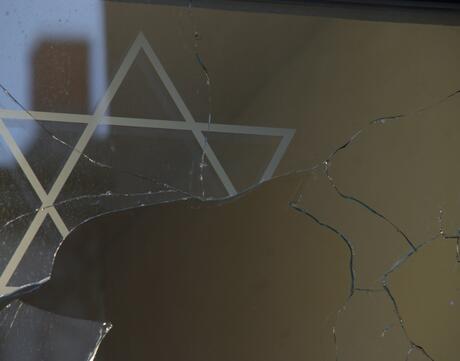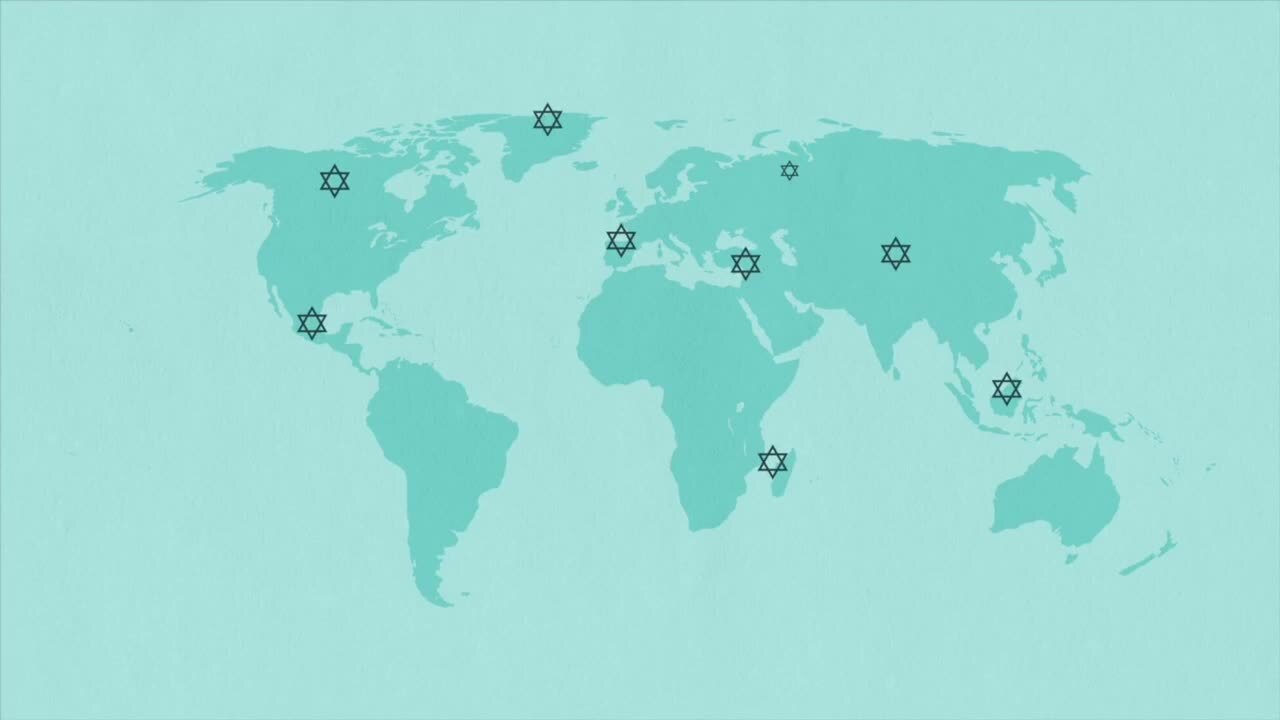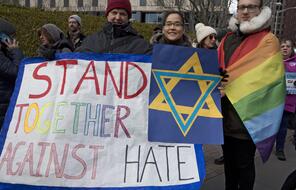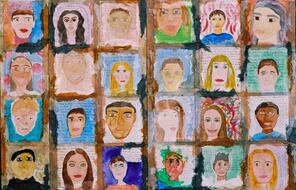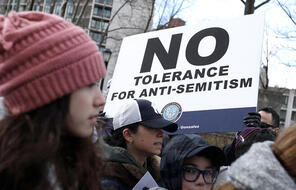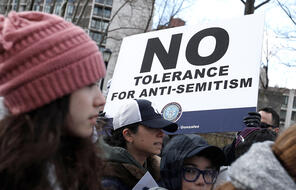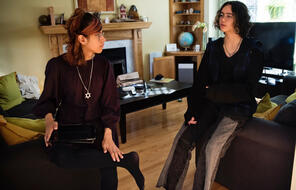This lesson focuses specifically on the antisemitic act of conflating all Jews with the actions and policies of the State of Israel. This version of antisemitism can show up online when a Jewish teenager’s social media posts are barraged with comments that reference the Israeli-Palestinian conflict, regardless of whether or not the post had anything to do with Israel or Palestine, and it can also surface on the street, when a person wearing visibly Jewish emblems (e.g., a Star of David necklace or kippah/yarmulke) is physically and verbally assaulted by a stranger shouting anti-Israel slogans.
The Israeli-Palestinian conflict is a complex and long-running conflict between two self-determination movements, Jewish nationalists (Zionists) and Palestinian nationalists, who both lay claim to the same lands. However, it is also a broader geopolitical conflict that involves the interests and support of various countries within and outside of the region. For thousands of years, both Jews and Palestinians have lived in the region of the Middle East that has become the nation-state of Israel and the Palestinian territories of Gaza and the West Bank. Both groups consider it their ancestral homeland, sharing many of the same holy sites. Like all history, the history of this region does not contain a single story, and the multiple narratives about the historical events that have shaped and perpetuated the conflict are sometimes in opposition to each other. The peoples in this region have suffered from frequent eruptions of violence, including terrorist attacks, human rights abuses, massive civilian casualties, and, at times, full-fledged war. However, many Israelis and Palestinians have worked together, and continue to work together, to seek out peaceful solutions that would ensure the freedom and security of both groups.
If you wish to consider the Israeli-Palestinian conflict with your students in more depth, it is essential that you have the knowledge, contracting, resources, and time to safely engage in this learning without causing harm. At the present moment, Facing History & Ourselves does not have resources to assist educators in discussing the Israeli-Palestinian conflict in the classroom. Two organizations that provide curricular support for teaching about the conflict are the Institute for Curriculum Services and the UK-based Solutions Not Sides.
When there are spikes in violence in the Israeli-Palestinian conflict, instances of antisemitic and Islamophobic conflation around the world increase as Jews, Muslims, and Arabs become scapegoats for the violence and unrest in the region.
In the months following the October 7, 2023, Hamas attacks on Israel and subsequent outbreak of war between Israel and Hamas, hate-related incidents and violence toward Jews, Arabs, and Muslims outside of the region has spiked. In the United States, there has been a 316% increase in antisemitic incidents
since October 7 and a 216% increase in Islamophobic and anti-Arab incidents
. Some examples include:
- Three days after the Hamas attacks on Israel, a landlord in Chicago, after listening to an incendiary talk-radio show about the Hamas-Israel war, murdered a six-year-old Palestinian American boy who lived in his building. The landlord also attacked the boy’s mother, who survived.
- In Berlin on the weekend following the attacks, several Jewish citizens discovered their homes newly marked with the Star of David symbol near the entrances, a practice the Nazis employed during the Holocaust to publicly identify Jewish homes and businesses.
- Mosques, Islamic centers, Muslim schools, and Palestinian businesses have been vandalized and threatened. Synagogues, Jewish schools, and Jewish businesses in the United States and around the world have been burned, firebombed, shot at, and vandalized.
- Jews and Muslims who wear visible signifiers of their identities experience a particularly high frequency of hate crimes when there are outbreaks of violence and war in Israel and the Palestinian territories. Places with substantial Orthodox communities, like Brooklyn and London, have seen a string of violent assaults paired with antisemitic slurs against Jewish people from these communities.
In November 2023, three Palestinian college students were shot in Burlington, Vermont, while on a walk. The students were speaking in a mixture of Arabic and English and wore keffiyehs, scarves that symbolize Palestinian nationalism. The shooter’s motivations have not yet been publicized, but he may be charged with a hate crime.
